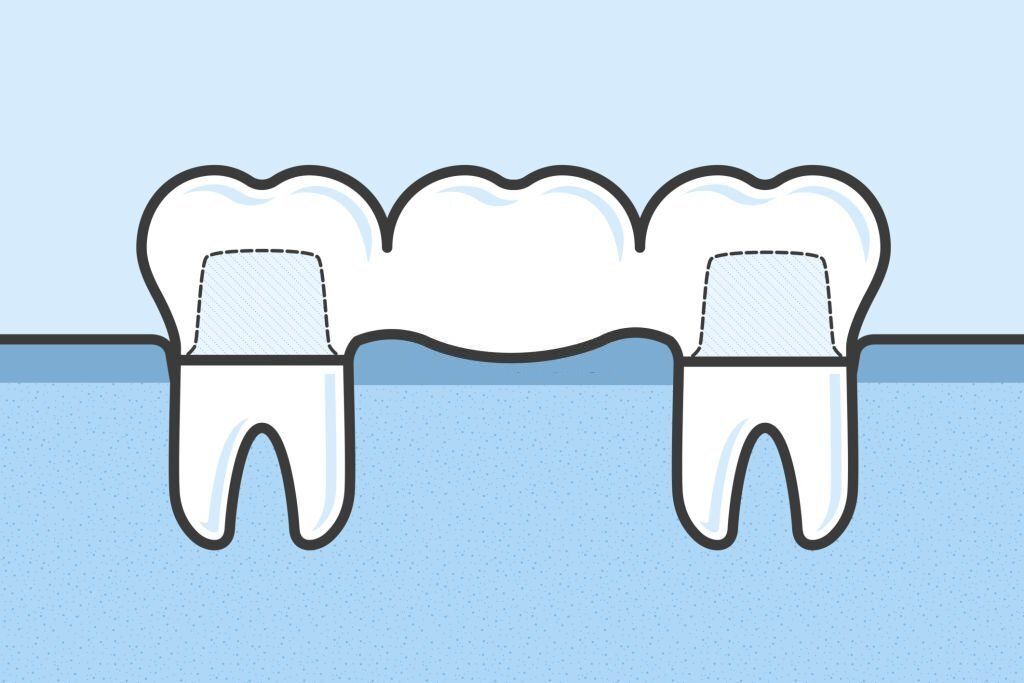HOW MANY TEETH CAN GO ON A FIXED BRIDGE?
Dental Bridge Treatment for Teeth Replacement

When a tooth is missing, many people think of getting a dental bridge as an excellent tooth replacement alternative. Dental bridges
, unlike dentures, are anchored in the mouth permanently, preventing any sliding or protrusion of bulk. As opposed to this, a dental bridge needs one fixture to replace multiple teeth. How many teeth can be replaced by a dental bridge is a question that many people wonder about.
Dental Bridges
A fixed-in-place dental restoration is referred to as a bridge. It is used for replacing lost teeth by permanently joining an artificial tooth to an adjacent tooth, whether artificial or natural. Dental crowns constructed of porcelain or composite resin are frequently used as artificial teeth when bridges are used. A dental bridge can also be used with dental implants to create an extremely sturdy tooth replacement.
The Function of Dental Bridges
The abutment teeth of dental bridges are typically covered with two or more crowns. This connection is made to the false teeth, referred to as pontics, at the end of the space.
Many different materials may be used to make dental bridges, but porcelain and metal are the two most usually utilized. Metal construction gives dental bridges high durability, strength, and resistance to wear-and-tear damage. In contrast, the porcelain material gives the dental bridge a natural aspect. Since porcelain strongly resembles natural teeth, as you may already know, the dental bridge is suitably covert.
When should you use a Dental Bridge?
Patients who have one single tooth or several lost teeth can benefit from a dental bridge. But the patient also requires sturdy abutments. These could be dental implants or healthy neighboring teeth. Suppose the natural teeth on either side of the missing tooth (or teeth) are strong enough to sustain the bridge over time. In that case, patients who choose a less intrusive treatment alternative than the conventional dental implant procedure may choose a dental bridge.
The replacement procedure
The general dentist will attach the dental bridge to the teeth on each side of the gap, whether natural or artificial, by cementing them together. The dental bridge will be secured by cement or bonding, enabling it to span the space between the teeth. The entire procedure requires some time since the bridge must be manufactured to order, but the effort is frequently worthwhile because it enables patients to eat, smile, and speak normally.
The number of teeth that can be replaced
A dental bridge can replace any number of teeth, depending on the situation. One to four teeth can typically be replaced with a dental bridge. Dental bridges are typically utilized to replace five or fewer teeth in very few situations. Because doing so makes the bridge less sturdy and, in this situation, less effective, multiple teeth cannot be replaced with a dental bridge simultaneously.
The number of crowns required will increase when more teeth are replaced with dental bridges. Giving the bridge more support is the main purpose of the crowns. Fixed bridges can therefore be used to replace several lost teeth, albeit the likelihood that they won't be successful increases with the number of teeth being replaced.
Advantages of Bridges
For Aesthetic reasons, people frequently choose to replace lost front teeth, but it might also be sensible to replace teeth. When gum pockets remain unfilled, the neighboring teeth may move in the patient's mouth, changing the bite and occasionally leading to issues like temporomandibular joint disorders. The following additional aesthetic and practical advantages of bridges:
1. Restore the smile's appearance.
2. Increase your ability to speak and chew
3. Keeping the face's form in mind
4. Use proper bite force distribution.
Learn more about how a Dental Bridge can restore your Smile
Dental bridges serve purposes other than tooth replacement. It can be utilized for both esthetic and practical reasons, such as restoring your smile's aesthetic appeal, enhancing your chewing abilities, and keeping the contour of your face.
You don't need to put up with the shame and inconvenience of having teeth that are missing when there is a solution available. Your teeth's function and appearance can both be enhanced by dental bridges. The correct dental bridges will be provided by dentist Richmond , so you may have a gorgeous smile and replace your missing teeth. Request an appointment or call Glenside Dental at (804)756-6658 for an appointment in our Richmond, VA office.
